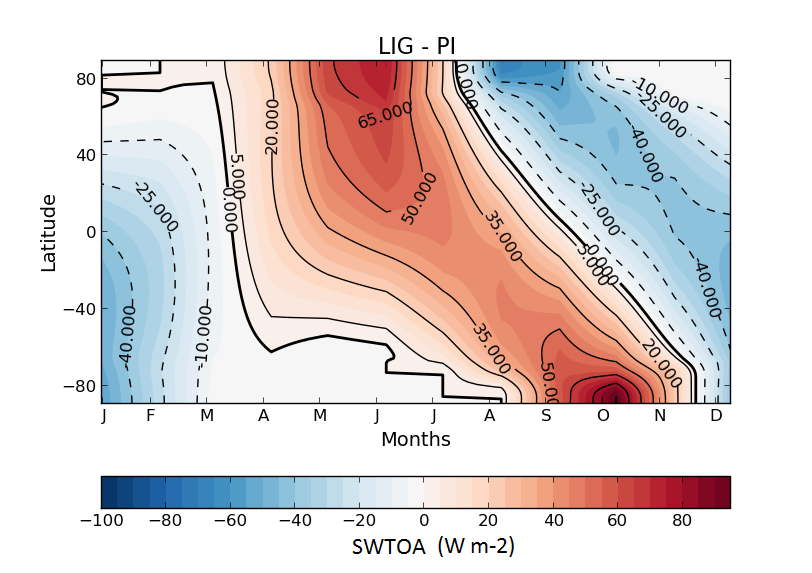CMIP6
Header image from V. Eyring et al.: Overview of the CMIP6 experimental design and organization. https://www.geosci-model-dev.net/9/1937/2016/gmd-9-1937-2016.pdf
The Coupled Model Intercomparison Project (CMIP) coordinates and designs global climate model simulations of the past, present and future climate. The research based on the CMIP model simulations regularly contributes to the IPCC assessment reports.
CMIP simulations aims at understanding climate change arising from natural, unforced variability or in response to changes in radiative forcing in a multi-model context [1].
The next Coupled Model Intercomparison Project (CMIP6) will address three following questions [1]:
- How does the Earth system respond to forcing?
- What are the origins and consequences of systematic model biases?
- How can we assess future climate changes given internal climate variability, predictability, and uncertainties in scenarios?
Past climate simulations provide the means to study large climate changes that have occurred in the past. These simulations contribute to answer the first of the three questions above by investigating the Earth’s climate response to natural forcing and the role of natural variability.
Past climate simulations belong to the Paleoclimate Model Intercomparison Project (PMIP), one of the serval Model Intercomparison Projects (MIPs) constituting CMIP.
We will perform the PMIP4-CMIP6 Last Interglacial time-slice simulation at 127 000 years before present (lig127k) [2]. The lig127k experiment is designed to address the climate responses to stronger orbital forcing than today’s. During the Last Interglacial (LIG) Earth’s orbital parameters like eccentricity, obliquity and longitude of perihelion were different from today. For example, the eccentricity of the Earth’s orbit was more than twice the present value. The different orbital configurations during the LIG result in different seasonal and latitudinal distribution of the top-of -atmosphere insolation (Figure 1).
The climate during the LIG will be compared with the reference CMIP6 simulations: PI pre-industrial control run (which uses the constant 1850 forcing) and historical runs (which use a variable forcing for the period 1850-2014).

References
[1] Eyring, Veronika, et al. “Overview of the Coupled Model Intercomparison Project Phase 6 (CMIP6) experimental design and organization.” Geoscientific Model Development 9.5 (2016): 1937-1958.
[2] Otto-Bleisner, Bette L., et al. “The PMIP4 contribution to CMIP6–Part 2: Two interglacials, scientific objective and experimental design for Holocene and Last Interglacial simulations.” Geoscientific Model Development 10.11 (2017): 3979-4003.